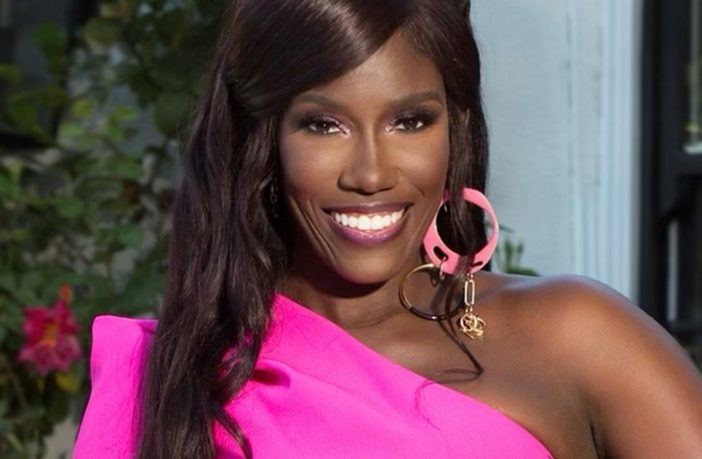Part of the title of Bozoma Saint John’s new memoir The Urgent Life, My Story of Love, Loss, and Survival—out on February 21—was a personal mantra even before she put words to paper. “I’ve been saying it for some time,” she tells EBONY. “Urgent to me is not just about speed, but it’s also about the intention that I’m purposefully moving my life forward.”
It hasn’t always been the easiest life to move forward from. In 2013, St. John’s husband, Peter, succumbed to cancer. The Urgent Life is part memoir, part catharsis and part self-help book all rolled into one. “I felt people needed to know you don’t have to have a perfect life in order to thrive or to live life without fear.”
Saint John shares more about her journey, from her husband’s final to-do lists to living an imperfectly perfect life.
EBONY: A lot of people internalize grief, but you took a very different path and decided to share your experience.
Bozoma Saint John: I’ve always been pretty fluent in social media, I share quite a bit. I’m talking about all kinds of things all the time, so I don’t think that’s a surprise. But at the time, this was ten years ago, I wasn’t as forward. When my husband was sick, especially when he his diagnosis became terminal, I shared it on social media. I don’t know why I did it, to be honest with you. Part of it was a way to just tell everybody at once because the drip, drip, drip of telling is so painful. Every conversation reopens the wound, so it was easier for me at first to tell my friends and family on Facebook. But then I found that people who I didn’t know were just as engaged.
One of the most powerful moments I write about in my book was when a good girlfriend suggested that we hold a prayer, a conference line. And all kinds of people showed up. It just felt like I could share in a way that was helpful to me and to some degree, helpful to others.
Before your husband died, he gave you a to-do list to finish?
I don’t think I’ve ever been more grateful for that list. And true to his nature, it was like really big stuff, like canceling our divorce. And also small things, like don’t forget to order the napkins. These two things are not equal but were a good way to keep us prioritized. I think the lesson I’ve learned from that is that first of all, lists aren’t bad. I used to be totally against lists. I still don’t really like them, to be honest with you. But I think just the mentality helps you organize that so that you don’t waste your time on things that really don’t serve you in the long run. The list was difficult and sad; I started to add things to the bottom of the list in the hope that we could beat fate and destiny, that if I just continued adding, we wouldn’t run out of time because there would always be something to check off. The list really was an understanding of what would be important for us and for me in remembering him. I thank him for that. He had a list for everybody, by the way.
THE URGENT LIFE: My Story of Love, Loss, and Survival
Bozoma Saint John (Viking, February 21)
Price: $26
The title of the book has become a motto that you’ve come to live by. Can you explain that a little bit?
It was a reaction, a proactive reaction to the question people have asked me when I’ve made a personal or professional move, and they didn’t understand why it had to be right now. It’s because I need to feel productive and satisfied and joyful even when things go wrong. My husband passed away. I lost my college boyfriend, my first child didn’t survive her birth. These things are terrible, but at the same time, I had an intention about what I wanted to do. After the death of my first daughter, I was very intentional in knowing that I wanted to be a mom, even though I wasn’t sure I wanted to be a mom before she was born. But after, I knew for sure.
Has that also driven you in business?
It’s shown up in my professional life. If I am dissatisfied with the position I’m in, I’m not waiting six months. It was six months between my husband’s diagnosis and his death. So to me, that’s a big deal. When somebody says, “Oh, just give us another six months and we’ll see where we are then, we can discuss your promotion and this other project—” no, thank you. In totality, for me, urgency is about the combination of time and intention. With those two things, you’re able to move life along at a speed that will be acceptable and happy for you.
This book is a mix of memoir and self-help. Was that always the intention?
People expected this to be the career book, the book that said how to be a badass or Badassness for Dummies. My need was to tell a story interwoven with the professional and personal. I don’t see a delineation between the two. I’m a better executive because I’m a widow and a single mom and because I have dealt with the tragedy of losing a child. I’m much more empathetic in my work. I’m a better leader because I understand people’s pressures and the things that go on. Do I know everything? No, of course not. But I think it’s helped me establish the why.
How did you get a course at Harvard Business School called “The Anatomy of a Badass?”
I know—to even have the gumption to call it that at Harvard! A case study on my career came first, and the professors who wrote the case came to me and explained that it was doing well. And since I was a live person, you know, because rarely do case studies have somebody who’s like alive and kicking, it would be great to show up to class and students could ask questions directly. And then they said, “You know what? It would be even better if you just taught it.” They had never had a class at Harvard called “Badass,” but there is a first time for everything. The idea of badassness is that sometimes, there are things that have not been done before, and we need to go and do them anyway.
So you should go for it, even when you’re not sure what it is.
I hate that saying, “You can’t be what you can’t see.” Then you’re telling me that I can’t be it because I simply don’t see it. Then what happens to the pioneers? To the people who do it first? It’s incorporating a little bit of belief in yourself and the fact that even if you haven’t seen it before, it can exist in the way that you want it to, to really live true to self without the apology of conforming to a society that expects you to be one thing. We have to talk about the fact that it doesn’t mean there’s no fear. Badasses are full of fear, but you just know that you’re not able to do anything less than what you are absolutely dead set on doing. A lessening of what you intended is actually what keeps you depressed and down and doesn’t allow you to live your fullest life. So pushing on, even in the face of fear, is part of the badassness.
What do you want people to take away from your book?
One of the things I really hope that people take away from my sharing all of this is that a perfect life doesn’t mean that perfect things have to happen. I know that our society has an issue with the word “perfect.” I don’t think it’s such a bad word. The issue that we have, though, is that we think that bad things equal imperfection, and therefore we become dissatisfied. But my point is that imperfection still has the word perfect in it. That thing that happened or failed to happen the way you want it to is still pushing you toward the perfect life. Perhaps you needed to have that failure in business in order to better understand how to build the next one. That big breakup, the death of that relationship is actually what is pushing you to your more perfect self. That is my goal, to live my perfect life through imperfections, and I’m grateful for that.



